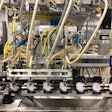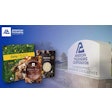
According to Vicki Gardner, senior vice president of product innovation at Nielsen, consumer packaged goods companies spend an average of US$15 million per product per year guiding some 30,000 concepts to the shelf, knowing full well they are likely to fail. These new products have a meager 10% probability of achieving new product success. So what makes a new petfood or treat not only novel and innovative, but a 'must-have' for a pet parent?
Gardner, in her presentation "Beating the Odds: The Critical Steps to Innovation Success" at Petfood Workshop 2012, outlined what Nielsen learned about what influences launch success after studying new product launches and initiatives for five years:
- The five critical success factors are salience, communication, attraction, point of purchase and endurance.
- Good enough is good enough. Meeting the nominal performance threshold on each success factor will increase the likelihood of market success.
- Outstanding performance on just a few relevant factors does not lead to success.
- Any new product is only as strong as its weakest link.
- Informed, mid-course corrections make it possible to resuscitate a failing initiative, getting it back on the track to success.
As part of the exploratory process, Nielsen researchers conducted a series of interviews with marketers to better understand how they filter and evaluate new products internally. The team found all existing models of consumer adoption unsatisfactory, and derived its own consumer adoption model through empirical research. Some of the important new product assessment questions included:
- Did it break through the clutter?
- Did users find it relevant?
- Did it generate online buzz?
- Did it win at the first "moment of truth"?
- Did it offer true innovation?
Nielsen's model for predicting new product success draws on a master set of twelve factors that cluster into five macro areas, as previously mentioned: salience, communication, attraction, point of purchase and endurance. Every winning new product studied incorporated all twelve factors, varying only in the degree of each required for success, based on the nature of the product and target audience. (See Figure 2 .)
1. Salience is all about "standing out." Successful new products do that in two key ways, according to Gardner: by bringing true innovation to the market and by breaking through the clutter with attention-catching marketing.
2. Communication represents the second phase of the consumer adoption process. Successful product launches accomplish two key innovation tasks: imprinting a message with consumers through strong comprehension and delivering resonant messaging.
3. Attraction , the third phase of innovation, serves as the first consumer evaluation point for the product proposition. It begins with a classic marketing setup: is there a consumer problem for this type of product, and does the test product solve that problem in an original way? The combination of problem and solution is critical. If both exist, consumers will be interested, according to Gardner. "Successful innovations also need to be credible and free of downsides such as the side effects often associated with over the counter products," she says.
4. Point of purchase is where consumers convert attraction into action. Purchase encompasses the findability factor (whether consumers can find the product in the right outlets, the right aisles and on the shelf) and the value equation (whether product advantages offset price and other costs).
5. Endurance , the fifth and final phase of consumer adoption, incorporates aspects of product delivery (providing the consumer benefits and experience as promised) and product loyalty (remaining differentiated from competition over time).
While substantiating the model and tracking tens of thousands of development iterations, the Nielsen research underscored the fact that new product success relies more on doing everything reasonably well, rather than doing a few things extremely well. This finding represents a significant shift from conventional thinking on innovation success, where it was generally assumed that weaknesses could be ‘averaged out’ with strengths in other areas. In actuality, innovation success is more about making sure everything is done ‘well enough’. Running alternative scenarios will help marketers visualize the outcomes associated with re-balancing success factors as the probability of success rises to certainty.












